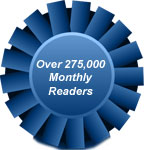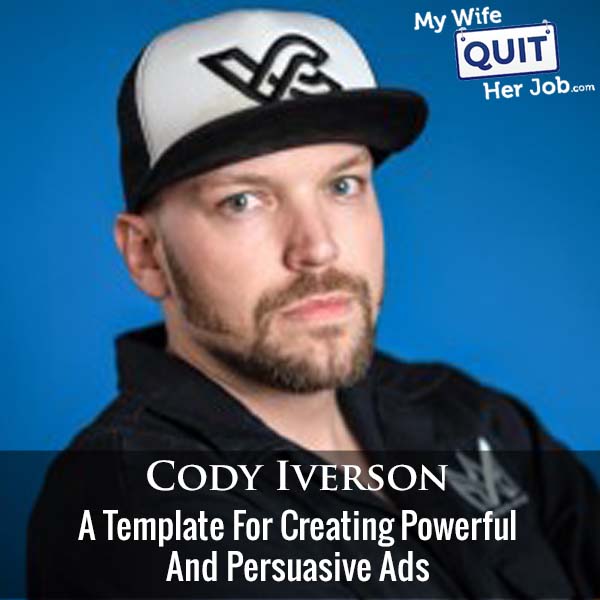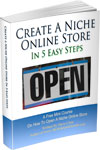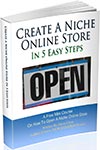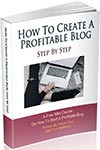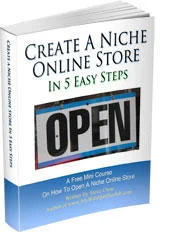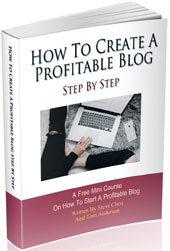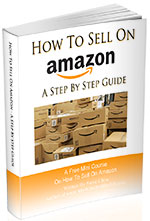Podcast: Download (Duration: 44:28 — 51.2MB)
In this episode, I have my friend Cody Iverson on the show. Cody is the founder of Viscap Media, an ad creative agency that works with influencers to create high converting ads.
If you have been having problems with your Facebook Ads, it’s likely because you are using poor quality creatives.
In this episode, Cody outlines his exact system for scaling eCommerce brands and the templates he uses to create effective ads.
Get My Free Mini Course On How To Start A Successful Ecommerce Store
If you are interested in starting an ecommerce business, I put together a comprehensive package of resources that will help you launch your own online store from complete scratch. Be sure to grab it before you leave!
What You’ll Learn
- Cody’s formula for scaling the creation of direct response video ads and branded content
- How to leverage influencer marketing to create content for your ads
- How to scale an ecommerce brand past 7 figures within a year
Other Resources And Books
Sponsors
Postscript.io – Postscript.io is the SMS marketing platform that I personally use for my ecommerce store. Postscript specializes in ecommerce and is by far the simplest and easiest text message marketing platform that I’ve used and it’s reasonably priced. Click here and try Postscript for FREE.
Klaviyo.com – Klaviyo is the email marketing platform that I personally use for my ecommerce store. Created specifically for ecommerce, it is the best email marketing provider that I’ve used to date. Click here and try Klaviyo for FREE.
EmergeCounsel.com – EmergeCounsel is the service I use for trademarks and to get advice on any issue related to intellectual property protection. Click here and get $100 OFF by mentioning the My Wife Quit Her Job podcast.
Transcript
You’re listening to the My Wife, Quote, or Job podcast, the place where I bring on successful bootstrap business owners and delve deeply into the strategies they use to grow their businesses. Now in this episode, I have Cody Iverson on the show who runs an ad creative agency where he also works with tons of influencers. Now, if you’ve been having problems with your Facebook ads and who hasn’t, then more than likely the problem isn’t with your targeting, but with your creatives. So in this episode, Cody outlines his exact system for scaling e-commerce brands and the templates he uses to create effective ads.
00:30
But before we begin, I want to thank Postscript for sponsoring this episode. Postscript is my SMS or text messaging provider that I use for e-commerce, and it’s crushing it for me. I never thought that people would want marketing text messages, but it works. In fact, my tiny SMS list is performing on par with my email list, which is easily 10x bigger. Anyway, Postscript specializes in text message marketing for e-commerce, and you can segment your audience just like email. It’s an inexpensive solution, converts like crazy, and you can try it for free over at postscript.io slash Steve.
00:59
That’s P-O-S-T-S-E-R-I-P-T.I-O slash Steve. I also want to thank Klaviyo for sponsoring this episode. Always excited to talk about Klaviyo because they’re the email marketing platform that I use for my eCommerce store and it depend on them for over 30 % of my revenue. Now you’re probably wondering why Klaviyo and not another provider. Well Klaviyo is the only email platform out there that is specifically built for eCommerce stores and here’s why it’s so powerful. Klaviyo can track every single customer who has shopped in your store and exactly what they bought.
01:25
So let’s say I want to send out an email to everyone who purchased a Red Hacker chip in the last week. Easy. Let’s say I want to set up a special autoresponder sequence to my customers, depending on what they bought, piece of cake, and there’s full revenue tracking on every email sent. Klaviyo is the most powerful email platform that I’ve ever used, and you can try them for free over at klaviyo.com slash my wife. That’s K-L-A-V-I-Y-O dot com slash my wife. And then finally, I wanted to mention my other podcast that I released with my partner, Tony.
01:52
And unlike this podcast where I interview successful entrepreneurs in e-commerce, the Profitable Audience podcast covers all things related to content creation and building an audience. No topic is off the table and we tell it like how it is in a broad and entertaining way. So be sure to check out the Profitable Audience podcast on your favorite podcast app. Now onto the show.
02:17
Welcome to the My Wife, Quitter, Jaw podcast. Today I’m happy to have Cody Iverson on the show. Now, Cody is someone who I met at Nick Shackelford’s Geek Out event in San Diego, and I was very impressed with his talk. Cody is the founder of Viscap Media, where he helps brands with their digital advertising by creating high volumes of converting direct response video ads and branded content. And they grew their agency to 10 million bucks in a single year with zero advertising. I’m actually curious how he did that.
02:45
But today we’re going to talk about how to scale e-commerce brands with influencer marketing and creating amazing ads for your brand. And with that, welcome to the show, Cody. How are you doing today? Steve, doing incredible, man. Thank you so much for having me. It’s an absolute pleasure. Very happy to be on. And I know that we’re going to have a great time. So thank you. Yeah, I’m actually really thrilled to have you on. mean, give us the background story first. How did you get started with advertising and e-commerce? And I’m very curious how you can scale to 10 million in a year.
03:15
That just seems like a ridiculous number to me. Sure. So the background is back in college. There was a guy and he showed us his stories like, check this out. I’m making 10 K a day. And he was drop shipping, of course, you know, four years ago and five years ago. And I was like, Oh, we can for sure do this. And so my partner and I, just started learning everything that we could. We were able to like crack the code and
03:43
Within our second month, we were generating 100K plus, continued to scale it, reinvested into our education, our network. And we ended up making a video for one of our buddies as like a favor. Creators were something that we were always good at and it did really well for them. So we were in between products at the time, drop shipping brands, e-comm is where we were at. And we pivoted over to the agency, knowing that a lot of the people that we had built inside of our network.
04:13
could benefit from having more creatives. And that’s kind how we got into the advertising agency space. That was like two and a half years ago. Interesting. So why did you stop drop shipping if it was working so well? I mean, it works so well for a certain amount of time, then the product dies or just like doesn’t always scale past like being a brand. And it’s more of like a rat race at the end of the day.
04:43
product dies, product launches, does well, dies. So we’re just looking for something that would be like more sustainable as well as something that we could truly like have a great exit on. So were you like Nick, like Nick was selling fidget spinners for a little bit that kind of crashed and burned. Yeah, we were doing sleeping devices, we were doing toothbrush, we were doing charging cables, stuff like that. Okay. Something had like virality and then didn’t. And then you were using Facebook ads and
05:13
and just the way you were creating creatives that you were doing for your clients? not as like we didn’t have as like greater capabilities as we do now. But through being scrappy is kind of like how we figured out like all of the little pieces of ads, because a lot of it we would like repurpose from places that we could find. And then we would need to go and shoot stuff as well. So it’s a combination of bolts back in the day. Okay, and then
05:40
I mean, how did you scale that to a $10 million business in one year? Mm-hmm. Dude, I’m not really sure where you got that number. Oh, I think I pulled it from your website. Did I get it wrong? No. Okay. So we’ve done e-comm to eight figure e-comm. Got it. Got it. Okay. Yep. So, I mean, the agency did scale well. We were able to get to 30, 35 clients within our first year. Okay. The way that we were able to achieve that is…
06:09
really through like two main things. So every time we would train a person for the first time, they would build the SOPs, the playbooks, everything like that. So it was very like documented processes. Now, the other thing that we did was, and this was right when COVID started. So what we did was we were doing interns and using these playbooks to train completely green people. So we were able to bring in a lot of like manpower right at the beginning.
06:37
to be able to sustain the growth. so pretty simple there. Yeah, actually what I am interested in is your secret sauce. I mean, I really enjoyed your talk at Geek Out because you actually had a really good answer for how you scale and structure your ad creatives because I know any brand has to have a bunch of creatives and they have to be able to rotate them in and out. So what I want to do today actually
07:05
is talk about some of your ad templates that you use to create effective ads. And I want to talk about how you work with creators and get them to create what you need for ads, like your entire process. I don’t know where you want to start with this. So we could kind of start with the end goal. OK. The end goal when we’re creating ads is always going to be a repeatable like template, a framework, as we call it. That is going to be what you’re going to be able to come back to time after time.
07:34
when times are uncertain, when iOS 14 is happening. These are your proven success models. So we’re always trying to build as many templates as we can. Because creative people like to be really creative. So if we don’t have these templates, then it’s kind of like they just make stuff that’s like, yeah, it looks cool, but it doesn’t necessarily convert. inside of your frameworks, your videos, when you break down all of the pieces,
08:01
There’s actually a lot that goes into a successful ad. Most of the time you ask someone, hey, what makes a good ad? And they’ll always say, it needs a good hook and it needs a strong offer. They’re not really necessarily paying attention to all of the pieces that are in between. So we’ve broken those down. We call them elements. Now, each one of those elements is assembled individually. So if you have a PASS UGC framework, stands for problem, agitate, solution, sale.
08:31
And then we usually mix UGC content after the solution has been introduced to provide social proof. your elements would look like problem, agitate, intro product, product demo, and so on and so forth. Now, as you’re testing these ads, your different frameworks will have some of these elements in them. So you can see if you shoot like five problem scenes and you’re running 10 videos, that problem scene could be in two.
09:01
two different videos or two videos a piece. So now you can see with multivariate split testing how each one of these elements is leading to or taking away from the success of your ad. So Cody, I’m going to need you to assume that the audience knows nothing. So let’s start with the basics here. Can we just go through each piece? So the hook we already know it grabs someone’s attention. Can you describe what agitate means for the audience? So you are like evoking
09:30
easiest way would be to you’re magnifying the problem. Okay, so let’s say I sell like shampoo, give me an example of agitating somebody. Okay, so you could have dandruff. Okay. Yep. Your hair could be coming this. So as part of the ad that agitate portion would be like, do you hate it when you have like really flaky hair or something like that? Or don’t you hate it when you have flakes and you got a date or something like that? That’s the agitate step.
10:00
So the hook would be you could do the hook is like is flaky hair ruining your day. Then the problem of that would be chemical filled shampoos lead to dry scalp. Okay, that’s your problem. Now you would agitate it. Can you no longer wear black shirts on your night out? So it’s like magnifying it.
10:27
So it’s like a demonstration of the problem too, right? That applies to the person watching the ad. Okay. Yep. Okay. Yep. And then what were the other elements? So you agitate and then do you present the solution then after that? Yeah. So then it’s intro product. Okay. There’s different ways. there’s different ways that you can introduce the product. We call those segments. Okay. So each element has a segment to it.
10:56
because it’s not enough to just say, this element was an intro product. What did you do to introduce the product? How did you do it? You could do with number of reviews. You could do it PR, social proof. You could do it with a benefit. So there’s options to it. OK. And then these are all like when you’re creating a bunch of creatives for a brand.
11:25
I imagine you’re filming all these different variations, right? Yep. So let’s so social proof. Will you literally just pull out a review or something and that and introduce the product that way? You could do customer base. So you could say something like loved by 20 or, you know, loved by millions worldwide. I see. Okay. Yeah.
11:52
And when you’re saying segments, just to be clear for the people listening, these are like interchangeable pieces that you’re going to use to create your ad creatives in the end, right? Yep. So I don’t think it goes. Yes, exactly. So in element and then you have your. So think of an element as like a option and then there’s drop downs below that. OK, so you could choose to introduce your product in four, five different ways.
12:22
Okay. By the way, just for anyone listening here, the reason we’re going through all this is because every brand needs to create a bunch of creatives. And Cody has this system where you can generate many different permutations. I don’t want to put words in your mouth, but would you say it’s like push button? We’re actually creating tech right now that will be push button that people will be able to use up until this point. It’s been semi-automated, but a lot of manual work.
12:51
Okay, so that’s why Cody’s talking about it, like all these different elements that he has in these creatives and he kind of mixes and matches them. Yeah, I just want to make that clear before you go on, just so no one’s confused. Okay, so the elements, so each element, so you have these elements that are kind of below this step when it comes to introducing your product, right? Different variations. Okay. The easiest way to kind of explain that for everybody, so it’s very clear, everybody’s familiar with a hook, okay? Now,
13:21
Everybody’s also most of the time familiar with the funnel. You have top, middle, and bottom. So if you think of a hook, you would be speaking to people differently in the top than you would in the middle than you would in the bottom. So the hook has three segments, top, middle, bottom. Can you run through some examples with that same shampoo example of different hooks in the top, middle, and bottom? Yep.
13:49
top of the funnel would be so completely unaware. Did you know that there’s a wrong way to shampoo your hair? Now in the middle, you could be talking about like problem aware. So you could say, recent studies show that a majority of shampoos contain this, whatever you know, the ingredient is. Okay, and this is for people that kind of already seen your ad or
14:17
or kind of semi familiar with your brand already, right? Yep. It seems like that hook could actually work even the top, the one you just gave. Could. Could, right? And then what about the bottom? Most aware. At the bottom, could probably do like a discount or a sale offer. Oh, that’s your hook. Yep. So until Thursday, get X product for 50 % off. Okay.
14:45
All right, so where do we leave off? Sorry, we left off at the intro step. What comes after the intro of the product? Product demo. Product demo, okay. Yep. Is it literally like in the shampoo case, like someone in the shower using the product? Yep. Okay. Very simple there. Then you would have a product result, intro product, product demo, product result. Yep. So showing the desired end result of the product for the customer.
15:15
And the objective there is to begin allowing them to envision themselves with the product. So you always want to make the first, there’s always two sales that occur if someone’s going to buy your product. The first one is if they can envision themselves using and receiving the product, now they’ll take out their wallet and pay for it.
15:37
So that’s what we’re doing in the. Do you film multiple versions of this also? Yeah. So we’ll usually have anywhere from like two to four or more actors and we’ll shoot each one of these pieces with them. Okay. So for someone who doesn’t have an agency want trying to replicate this model for you, what is the reason to have multiple models and, that sort of thing? Like is it, is it crucial? Yeah, it can be so.
16:07
You’ll be awfully surprised at how well or how poor certain people like pull or connect with the audience. So it’s good to have a couple options there because sometimes you could have a great video, but if people just don’t like resonate with the audience, it’s not going to convert. Now the other portion of that is not every single video style that you’ll ever have will only need one actor. Specifically, if you’re trying to
16:37
do if you need UGC testimonial pieces inside of your ads, then you’re definitely going to need different actors to like be real people, essentially. OK. For the audience, the way, UGC stands for user generated content. And in your case, though, user generated content isn’t necessarily generated by the person leaving the testimonial, Correct.
17:02
Okay, because I’ve solicited testimonials for my store as part of our autoresponder sequence, we get about a coupon, you know, for them to just record a short video, but I would say like 80 to 90 % of the time. It’s pretty terrible. Yeah, yeah, unfortunately, they’re, it’s hard because they’re just they’re real people. They’re not like thinking like, Oh, well, should I film it like this? Or should I say this? So then they can sell more products.
17:29
They’re just being very genuine and they want to leave, you know, a great review because you changed their life. So do real people not work as well as trained creators? Generally speaking, no. Okay. A lot of the time, and I’m sure that anybody who’s ever like had to be in front of camera for the first time, it’s a little nerve wracking the first time you do it. So, I mean, it’s a, it is like a muscle that
17:58
people begin to build up to where they can act very natural, can execute, they can add tonalities to their voice, they can pretend like there’s thinking stuttering a little bit. So it looks like very authentic and natural. Okay. All right. So UGC, guess, I think we had this conversation before I hit the record button, but you’re taking real testimonials and you’re just having creators, you know, narrate those.
18:27
And you probably have many different versions of this also. Yep. So because when a partner comes to us to create video ads for them, they want results. They want things that are going to convert. So what we do is we’ll take the testimonials off of their websites, people’s real reactions, responses to the benefits and experience with that product. And then we’ll
18:54
bring in people who are actors or content creators to then be the ones who execute the, uh, you know, the messaging and the story of this. And in this way, then you’re getting the best of both worlds, real people’s responses with people who can carry out the message and bring results. So how do you actually find someone who can do this? Like how do normal people, how do you, how do regular humans actually find and train these people to say what the way you want? Yep. So
19:24
There’s a couple of ways that you guys can get these people. Search Facebook groups. like we do like we’re from Las Vegas. So we do Las Vegas models, Las Vegas actors, Las Vegas talent. So if you want people who are local, you can do that. California has great groups. Florida has some groups. Tennessee also has some good groups. Now, another option there would be the TikTok.
19:52
creator marketplace that is like super, super hot right now. lot of great creators on that platform. All you really have to do most of the time is exchange product with those people. And the thing that you’re going to need to provide them with is going to be a brief. The brief will kind of give them the information. It is the product info. These are the deliverables that we’re looking for.
20:20
And these are the things that I’d like you to say inside of it. You can provide them with examples of what it should look like. Okay. And I can share. If you can attach a link like down below. I can definitely do that. Yeah, I can attach a link in the show notes. I can give them a an example of the briefs that we send out and then they could just like, you know, change it up for their own product. Dude, that’d be great. What can you we just talk about the brief? Just off the top of your head though, because I’m kind of interested in I might have a couple questions.
20:49
So you tell them, do you script it out for them? Or do you just say which points that you need to be made in the video? We give them points that we need to be said. So it’s important that you do you control as much as you can so that you’re getting the result that you know will drive results. A lot of the talk around TikTok currently is
21:16
Hey, my creatives won’t scale past like three or 5k. Most of the time that is because it was from a creator that made the piece of content, which doesn’t have any like direct response principles in it. It’s not like formed with, uh, you know, marketing intent as we’re ads that we’re creating for tick tock can get like 30 to 50 times more spend for a single asset. So it’s important that you can control as much of it as you can.
21:46
So I know for TikTok, so I’ve actually been approached to do a couple of these ads and they rarely give me any direction. But I’ve also found that there’s companies that give me lots of direction, but then it doesn’t sound natural at all. How do you straddle that line? So we like to do like bullets or prompts of things that need to be said and then allow them to like fill in the gaps in between. Okay.
22:15
So main points, but then you can just add lib what you want to, as long as you cover those points. And then in terms of deliverables, what do you ask for? So if it’s a single creator that we’re working with from the creator marketplace, let’s say how someone listening could be doing it, we’re usually looking for like three pictures. We’ll just use those on social, probably IG, and then like three video assets in exchange for the product.
22:46
Wow, actually that’s a lot to ask for without paying someone, right? It’s literally just the product that you’re giving away. Yes, but most of the time these people are interested in growing their TikTok following. So if you tell them that you’re going to whitelist it or run a spark ad behind it, so for anyone who doesn’t know, you can get the content from the creator. They’ll give you a post ID and then you can run ads from it from your own business manager.
23:17
Now these work very, very well, very, very well. And we usually position it as the fact that we’re going to be driving tons of traffic to their page and that they’re going to get more followers, they’re going to get more likes, they have the chance to go viral, which is really at the end of the day what they’re trying to do.
23:37
If you sell on Amazon or run any online business for that matter, the most important aspect of your long-term success will be your brand. And this is why I work with Steven Weigler and his team from Emerge Council to protect my brand over at Bumblebee Linens. Now what’s unique about Emerge Council is that Steve focuses his legal practice on e-commerce and provides strategic and legal representation to entrepreneurs to protect their IP. So for example, if you’ve ever been ripped off or knocked off on Amazon, then Steve can help you fight back and protect yourself.
24:06
Now, first and foremost, protecting your IP starts with a solid trademark and Emerge Council provides attorney-advised strategic trademark prosecution, both in the United States and abroad for a very low price. And furthermore, the students in my course have used Steve for copywriting their designs, policing against counterfeits and knockoffs, agreements with co-founders and employees, website and social media policies, privacy policies, vendor agreements, brand registry, you name it. So if you need IP protection services, go to EmergeCouncil.com and get a free consult.
24:35
And if you tell Steve that I sent you, you’ll get a hundred dollar discount. That’s E-M-E-R-G-E-C-O-U-N-S-E-L.com. Now back to the show. I love it. Okay. So instead of compensating them, you know that they want to build their following. So you’re actually just running ads straight to their TikToks. Yep. Does that work with YouTubers as well? I couldn’t speak on that. We haven’t done that with YouTubers. Oh, so it’s mainly TikToks right now. Okay.
25:04
So literally you can get by giving away a product to someone who has a large following. I guess the nice thing about TikTok is the amount of subscribers doesn’t really matter as much as other platforms. So do you actually even care how many subs they have? I don’t. You don’t. Okay. I just care if they can make good content. Right. So you’re just literally looking through their TikToks and seeing if they can talk eloquently. Yep. Or are they making stuff that’s like on trend? Are they using the
25:33
the on trend music, are they doing, uh, you know, trendy transitions, video styles, things like that. So what is your search process? Like, I mean, there’s millions of people on tick tock. How do you find these people? Uh, just massive outreach, massive outreach. Okay. Yeah. So we have like a team that will do like just scraping. So if we have a new client, let’s say that’s doing hair. Now we’re going to go search for like relevant.
26:04
hashtags in the hair. So we could do shampoo, we could do hair talk, we could do beautiful hair, so on and so forth. So that’s like the grunt way or a platform that we use that’s very, very great. I highly recommend using these guys is incense. How do you spell that? Is it I n c n s e incense? That’s okay. play. It’s fine.
26:33
Yeah, yeah, I and S E and S E S. Okay. Is this like a marketplace for creators? That is it. Yeah. You know, what’s funny is like in the past when I used to use marketplaces, I found that everyone on a marketplace tends to be more expensive because they already kind of know what they’re worth. Yep. Yeah. Is that the case here too? Of course. Um, but a lot of time, like
26:58
A lot of the time, I mean, I’ve had people say absurd things that they want like $3,000 for a video. They’re just shooting their shot a lot of the time. And if you offer them like, let’s say a third of that, they’ll usually take it. Interesting. Plus you’re driving traffic. Like, do you tell them how much ad spend is going to go behind whatever they create? No, because I don’t know if it’s going to work and I’m not going to like promise that I’m going to spend on something that isn’t working. That makes sense.
27:26
Okay, but you’re just gonna tell them that you are gonna spend money on there. You don’t know how much yet. Yep. Yep. I’ll tell them I might like give them an example. Hey, creatives that have worked in the past, we’ve spent 10,000 $20,000. That usually has resulted in X number of following or likes, whichever is, you know, accurate for past results that they may be able to see. Okay, I mean, we’ve kind of strayed from like the ad formula, like this is something separate, right?
27:54
I mean, this is literally advertising through TikTok. It doesn’t follow the same structure, does it? No, it doesn’t because TikToks are a lot more creative than your Facebook-style ads, which can be much more structured. OK, so let’s shelve the TikTok until after we finish the Facebook creative ads here. So we got to the UGC part. What is the final box? So.
28:21
After UGC, then we have what we call summary problem. Okay. We’re summing up, hey, if you don’t do this, then you’ll continue to suffer. Okay. So stop washing your hair with chemicals that stunt growth, you could say, we’re reminding them of their current state. So we want to do away from pain because people will go away from pain and towards pleasure.
28:47
So then the next element would be summary solution. Join millions now growing their beautiful long luscious hair one shower at a time. And then you have action. Yeah, guarantee usually and then call to action. Yeah. OK. So for the actors or the creators in these steps, you’re not using tick tockers, are you? Or can you or has that happened?
29:17
It could work. Yeah, of course. Usually for these, like we’re using actors here locally in Vegas. Okay, got it. So they have to be actually be in person then, right? You can’t just have them film with their phone, for example. You can, of course, we’ve done it, but it’s usually not as it doesn’t always come out as great. mean, at least so here, look, anybody who’s listening right now, they can have that occur.
29:46
Us as like being contracted to create these ads. We want to make sure that we have control of the of the footage and things that we’re getting. Yeah, to give our clients our partners a quality asset that we believe in will convert for them. The only reason I’m asking is sometimes when it looks unprofessional, it might work better, right? Is that ever? Okay. Oh, yeah, of course. Of course. It should look native to the platform.
30:15
we’re usually mixing in a combination of like, could say self shot looking content with a bit more polished. So probably 50 % of the footage that we put out in our ads is actually shot on the newest iPhone. Okay. And so once you have all these little segments filmed, that all these little pieces now, how do you actually mix and match them to create all the different
30:45
permutations. Is that done by hand or? Yeah, kind of. Yeah. So the way that it has been getting done is
30:59
It’s a little bit above my head. I’m not like the one in the editing like softwares. Yeah, no worries. But from the way that I understand it is they’ve got these sequences. So when you put in a piece, an element into the software, then it’ll like place it in different locations. And it just does that a bunch of times. And we can determine which pieces go where from an Excel sheet. Super.
31:28
That’s some crazy Excel sheet. Yeah, so but what we have working right now and It’ll probably be two months before like anybody could use it But you would basically be able to go in there build out any framework and then just have like a drop-down and pick the elements or the clips that you want and then it’ll just like assemble a bunch of videos for you So for a smaller brand who doesn’t have a team what would you say like the?
31:59
Would you film like maybe two or three permutations per slot and that’d be good enough? Probably. I’d look, I would personally like to do four. Okay. I’d like to test three and then I’d like to have one saved over to test against my control, whichever that comes next. Okay. You guys don’t do the ad buys, do you? Just to create it or do you do the ad buys too? We now do the ad buys. Yeah. Okay. So that’s, that makes things a lot easier. Yeah.
32:28
Um, it’s not like it doesn’t have to be, you know, we do the ad buys as well. Um, but we just started doing ad buying this year and we had waited some time because we never wanted to be seen as like an agency that’s like, yeah, they’re great at content, but their media buying socks. So, it. So, uh, let’s go back to Tik TOK now because Tik TOK is hot. we, we kind of talked about, uh, the brief that you give them.
32:56
And their deliverables you said I think with a camera what you say exactly two videos plus three photos. We usually ask for three videos and three photos. Yeah. OK. And do you have any requirements on how it’s filmed, like the lighting and all that stuff, or do you just kind of leave it up to the creator? There’s definitely like we don’t want it to be dark or dim or anything, but we’re usually picking creators based off of like what content we can see is available.
33:26
Creators are like creating a you know a brand almost they’ve got a consistent style and feel to the assets that they create So you’ll usually have a good sense on if you would need to go the extra mile to tell somebody Specific things like that. We’re usually picking people that we believe we shouldn’t have to Right, okay, because you’ve seen their work and you like their style already, right? Yeah. Yeah, I know creators are
33:54
reluctant to do these sometimes because it they typically don’t perform well, right? When they’re pitching something. So I’m just kind of curious how you structure what they’re reading or their bullet points. So it doesn’t sound too salesy because I know like whenever I even get remotely salesy about anything like the reach of that tick tock just plummets. So that’s a great question for the team. I’m not as involved with like the creators like on the day to day.
34:23
OK, but. It would follow a similar concept to what we discussed earlier, how you’re giving them prompts or bullet points, because that’s what we do here with anybody who’s going to be doing like a UGC piece. yeah, so we’ve gone through many like. Renditions of like how we’ve come to that point. We used to script it out completely. We used to give it to him line by line, try and have a memorize it. We.
34:52
with no script. We’ve tested like everything and the best thing that has come back with like delivering the sales message, but also feeling authentic has been prompts or just like bullet points. Okay, that makes sense. I also wanted to touch a little bit about just the changes that the Apple changes. I vaguely remember you saying that if you focus on the creative and you have great creative, it doesn’t really matter as much what’s going on in Apple land, right?
35:22
What is your take on it and going forward in 2022 and 2023?
35:34
Where we’re at our take right now currently for this year, all of our partners are my biggest recommendation for anyone listening is channel diversification. You never want to be stuck with all of your eggs in a single basket again, because there is no possibility that that is the last time that something like that will happen. And it’s probably not going to be the worst time that something like this will ever happen again.
36:02
We’re designing and recommending that you design for TikTok first. TikTok first design allows you to have a true cross channel content strategy. Even if you’re not going to run on TikTok, there’s now more than a billion daily active users on TikTok and the watch time is now longer than YouTube. What that means is that trends on TikTok are now dictating what’s working on other social platforms from an ad standpoint.
36:32
And so, designed for TikTok first, you have a true cross-channel content strategy. Designed for Facebook first, you’ll never be able to tap into TikTok. It won’t look native, it’ll look like an ad, it will not work. Cross-channel diversification and then owned audiences. So, SMS, lead gen, as quickly as you can, get them off the platform and be preparing now for Q4.
37:00
So that implies that that whole framework that we went through, I mean, that wasn’t for TikTok. So what you’re implying in what you just said is that these briefs that you’re giving out to these creators, you’re running ads against those on Facebook? We’re taking pieces from it, yeah. And then filling those frameworks that we discussed at the beginning with those pieces from TikTok. Got it. So it’s not literally just taking the TikTok as is and running an ad against it. You’re just taking pieces of that TikTok into the framework for Facebook.
37:30
Yep, exactly. Okay. When you say diversification, we mentioned TikTok and we mentioned Facebook. What else have you been up? Yeah. So our big three are Facebook, IG, YouTube and TikTok. We don’t really run snap, although that would be an option. And we don’t really run Pinterest, although that could also be an option. So in terms of YouTube ads, is there much modification from the Facebook formula?
38:00
Mm-hmm. So we usually go longer on YouTube than we do on Facebook. Those are the main modifications. And the only other thing would be that there’s just not as many templates that work on YouTube as there are on Facebook. And it’s not to say that it’s not possible. Our domain expertise had just been so primarily Facebook for the longest time that we didn’t like go as hard into YouTube.
38:29
Can you give me an example of how long a typical Facebook ad is versus a YouTube ad? Yes, right now our Facebook ads are usually always less than a minute and more so recently like near 15 to 30 seconds than in the past. YouTube usually looking our best YouTubes are usually between four and like seven minutes. Wow. Okay. That’s almost like an infomercial then. It’s it takes off of that a little bit. Yeah.
38:59
Okay, so we’re talking like, I can’t remember that the squatty potty commercial that was like four minutes wrong, long, think. Yeah. So we what we classify those as like your infomercial. Okay. Probably not like the most group or you know, correct term for it. But that’s what we call them here. Those are like those are Harmon Brothers style videos.
39:24
Right, yes. Yeah, we don’t really do too much like that. This would be like more hardcore direct response think like VSL. Got it, got it. Okay, Cool. And then how’s your ad buying strategy changed? It’s a great question. I’m not much of the ad buyer personally. Okay, okay. Yeah.
39:47
We’ve kind of kept it the same. mean, for us, the most important thing is cold traffic testing. So we’re always looking to have one ad per ad set, and then like 2 to 3x times the target CPA. Same thumbnail, same copy, same lander. For us, we want to know, is this new creative video going to scale or not?
40:17
Now how people scale it, that’s usually up to them. Okay. So yeah. Okay. Yep. I mean, this is actually very helpful. I mean, just the framework in itself is, is pretty gold. I mean, most people, like if you ask anyone, what makes a good ad for someone who I guess isn’t thinking about this in this, in this structured way that you are, I mean, this is a framework, essentially what you put together, right? Yeah. And, is it something that has lasted the test of time?
40:46
Have you altered this framework or? Yeah. So the best of the frameworks have been able to survive the time with minor tweaks, you know, continuously trying to evolve. But there’s been frameworks that have come a few months works and then they, you know, they fizzle off, but we’ve probably got like 20 that have like continue to work month after month.
41:15
for a year, two years. So you just said 20 frameworks. The one that we talked about in this podcast, are they all just kind of variations of that? No. Oh, they’re not. They’re completely different. Wow. different. Yeah, completely different. Unfortunately, we don’t have time to go through all those. But the one we talked about, is that like one of the main ones that you use? That’s the like most OG of them all. OK, that’s the bread and butter. Yeah, that’s like.
41:43
That’s like your traditional as seen on TV, like our take on as seen on TV type of ad. Cool. Yeah. Well, Cody, I can’t believe you’ve been talking for 40 minutes already. If people want to know more about your work, what type of, actually I wanted to ask you, what type of brands do you work with? Like what’s your ideal customer? Sure. So the ideal customer would be eight to nine figure brands, D to C.
42:10
Physical product is where we’re best at. We enjoy working with good people, people that understand the importance of testing and that ultimately want to take their business to the next level. We do some work with Amazon sellers, but our primary is e-commerce, DTC for sure. Okay. All right. That was actually my next question. Yeah. I guess most people don’t run a lot of Facebook ads to Amazon with the people that you work with.
42:40
No, not that we work with. We work with some really great brands on Amazon. And usually what we’re trying to do for them is take them off of Amazon. Got it. That makes sense. Well, Cody, I appreciate your time, man. This is very valuable. And I’ll link up all the assets for everyone who’s listening that Cody mentioned, like the sample brief. I’m sure all that stuff would be very useful if you’re looking for TikTok creators to promote your brand. So thanks a lot, Cody. Really appreciate your time, Thank you, Steve. Appreciate you.
43:12
Hope you enjoyed that episode. Now when it comes to creating effective ads, most people are doing it wrong or inefficiently. And even though you might not have a team to create ads for you like Cody does, the principles of effective advertising can be easily implemented on a smaller scale for your business. For more information about this episode, go to mywifequitterjob.com slash episode 409. And once again, I want to thank Postcode, which is my SMS marketing platform of choice for e-commerce.
43:38
With a few clicks of a button, you can easily segment and send targeted text messages to your client base. SMS is the next big own marketing platform, and you can sign up for free over at postscope.io slash div. That’s P-O-S-T-S-E-R-I-P-T dot I-O slash div. I also want to thank Klaviyo, which is my email marketing platform of choice for eCommerce merchants. You can easily put together automated flows like an abandoned card sequence, a post purchase flow, a win back campaign, basically all these sequences that will make you my own autopilot.
44:05
So head on over to mywifequitterjob.com slash KLAVIO. Once again, that’s mywifequitterjob.com slash KLAVIO. Now I talk about how I use these tools on my blog. And if you are interested in starting your own eCommerce store, head on over to mywifequitterjob.com and sign up for my free six day mini course. Just type in your email and I’ll send you the course right away. Thanks for listening.
I Need Your Help
If you enjoyed listening to this podcast, then please support me with a review on Apple Podcasts. It's easy and takes 1 minute! Just click here to head to Apple Podcasts and leave an honest rating and review of the podcast. Every review helps!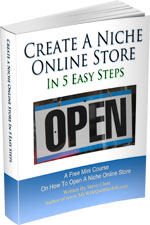
Ready To Get Serious About Starting An Online Business?
If you are really considering starting your own online business, then you have to check out my free mini course on How To Create A Niche Online Store In 5 Easy Steps.
In this 6 day mini course, I reveal the steps that my wife and I took to earn 100 thousand dollars in the span of just a year. Best of all, it's absolutely free!

